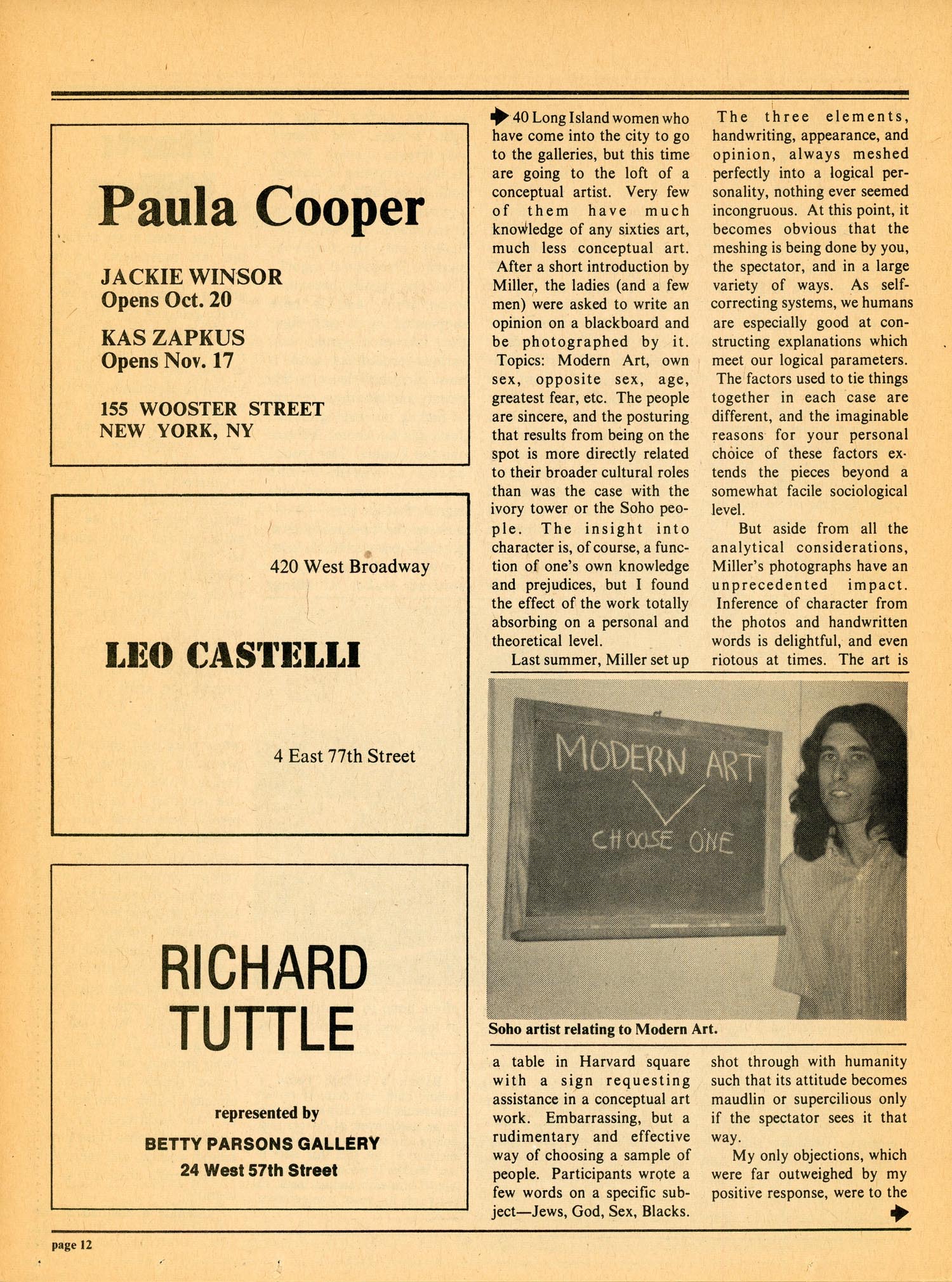Marc H Miller
From the moment I first saw Mike Malloy's brand of conceptual art, that focused on human psychology and incorporated the actions of people, I found my own creative direction. It took less than six months from my first attempts to my first solo show at OK Harris Gallery in Soho in fall 1973. The exhibition was a surprise success and was bought up in its entirety by a consortium of Italian dealers who then toured it around Europe. I was suddenly an artist of interest included in trendy group shows organized by the hot young curators of the moment like Edit deAk's "Not Photography" and "Lives" by Jeffrey Deitch, both held at the Fine Arts Building in Tribeca in 1975.
Since I needed people in order to make my art, I was always searching for ways to find find participants. My earliest works were done on Harvard Square during a summer I spent in Cambridge. In New York I started to collaborate with video artist Paul Tschinkel who had a studio in Soho. Saturday was the day that people visited galleries and we put up posters advertising participatory performances that we called Encounter Art. We soon had lots of action thanks to a woman named Rosalyn who led gallery tours and made us a part of her itinerary.
In the mid-70s I began to work with Bettie Ringma; in 1978 our collaboration expanded to also include the realist painter Curt Hoppe and video documentation by Paul Tschinkel. Our “Paparazzi Self-Portraits” and the Polaroid portraits that Bettie and I took in Amsterdam bars attracted a lot of press attention. Along the way we were helped by gallery owner Ivan Karp, Washington DC art promoter Alice Denney, and art historian Bill Gerdts who arranged for us to show our Amsterdam Polaroids in the heavily trafficked mall gallery connected to the CUNY Graduate Center on 42nd Street.
Conceptual art was open-ended in ways that deliberately challenged both the nature of art and the definition of an artist. I continued to exhibit in galleries for almost a decade, but over time my "art" and my "creative identity" began to change. Without consciously breaking stride, I was becoming less interested in creating objects for the wall and more involved in producing publications, videos and exhibitions. I stopped using the term “artist" as I increasingly worked as a journalist, curator, and publisher.

































